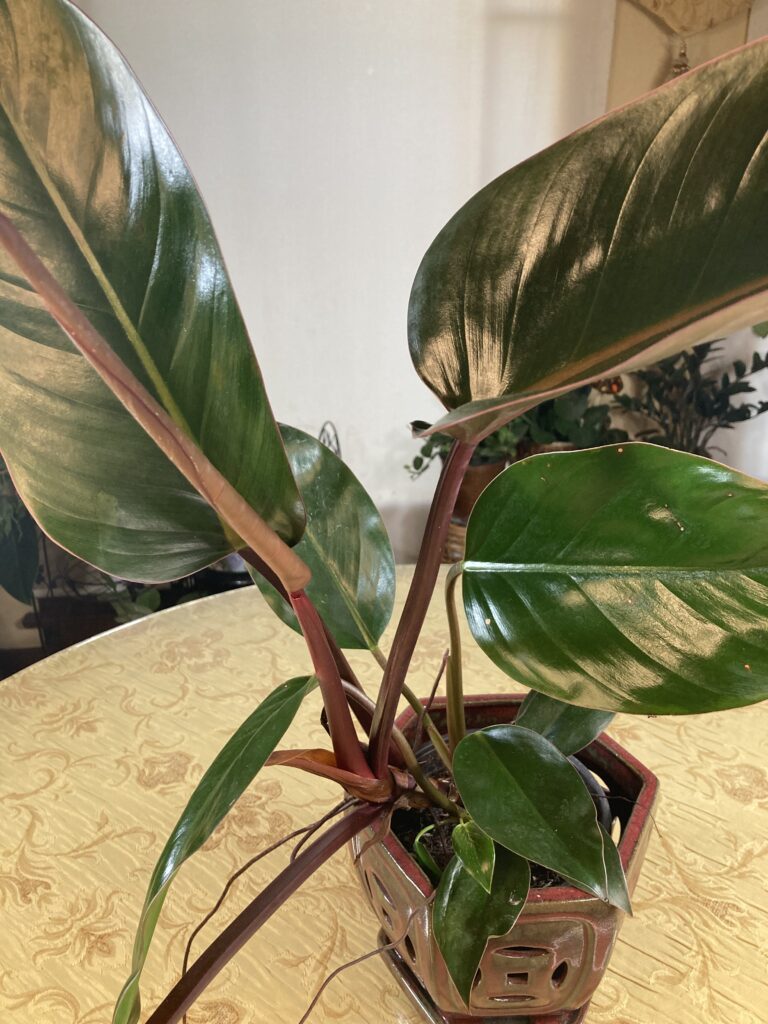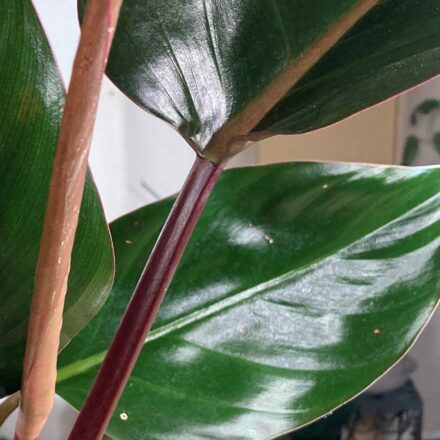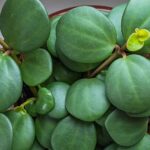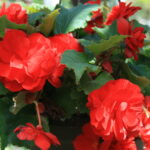Grow Red Congo as a Houseplant
If you like the look of the tropics in your indoor garden and want a no-fuss houseplant, you’ll love ‘Red Congo’ Philodendron. This easy-to-grow houseplant is gorgeous, with shiny green and burgundy leaves sure to make a splash in your indoor landscape.
Red Congo Philodendron is one of many cultivars hybridized by philodendron growers in recent years. The plant’s botanical name is Philodendron tatei ‘Congo Rojo.’ (Rojo means red in Spanish). The plant is a cross between Philodendron ‘Imperial Red’ and Philodendron tatei.
Red Congo sports burgundy-colored leaves accented with green. As the leaves mature, they turn various shades of red and green. The plant’s colorful leaves and striking red stems make Red Congo an attractive addition to any indoor garden, says Chris Link, co-owner of PlantAddicts.com, where they carry Red Congo Philodendron.
About 'Red Congo' Philodendron
A native to South America, Red Congo Philodendron grows on the jungle floor. The plant has an upright clumping growth habit and is self-supporting. Rather than sprawl upward in a vining pattern like heart-leaf philodendron, Congo Rojo grows from a single central stem. It is at the base of this stem where new leaves continually form.
Other common names for this colorful, tropical plant include Rojo Philodendron and Congo Rojo.
Red Congo can eventually reach 4 feet tall indoors, but that will take some time. In the jungle, mature plants flower, but that rarely occurs indoors. Flowers come in a variety of colors, including pink, purple, red, green and white. The flowers are mildly fragrant.
To have good luck growing this tropical houseplant, you want to mimic its natural growing conditions as much as possible. Keep the following cultivation tips in mind when growing Red Congo in your indoor garden.

Lighting for Red Congo
Since Red Congo is native to the dappled sunlight of the rainforest floor, the plant does best in medium to bright indirect light. Find such light in front of an unobstructed northern or eastern window. If you are going to put Red Congo near western or southern windows, place them 3 to 5 feet from the window. Hot sunlight from western and eastern windows can burn the foliage.
At the same time, avoid low light conditions, as this will cause Red Congo to stretch for light and become weak. When this occurs, the plant will lean, which can cause the roots to loosen in the soil. Rotate the plant if it is near a window to ensure even growth. If you live in a dark home, the plant also does well under full-spectrum lighting.
Watering for Red Congo
Red Congo Philodendron is a little on the tricky side when it comes to watering. Many philodendrons are forgiving when over or underwatered, but this one can protest if you err on either side. Too much water will lead to root rot, leaf spotting diseases and yellowing leaves, and too little will lead to slow growth and can result in leaf loss and crispy leaf edges.
“Red Congo likes to stay moist, but not too wet,” says Link. “Make sure to plant in a well-drained pot and to check the soil often for water readiness.”
Water Red Congo when the top 2 inches of soil has dried out. You can test with your finger, or use a moisture meter. When the meter registers 3 when inserted into the top 2 inches, it’s time to water. Always water with warm water—especially these jungle plants.
Red Congo Philodendron Fertilizing

Feeding Red Congo Philodendron on a regular basis will result in lush, vibrant, shiny new growth. Fertilize with a wall-balanced, organic fertilizer monthly spring through fall. If you live in a year-round warm climate, you can continue fertilizing in winter, but otherwise, refrain from feeding your Red Congo in the winter months when the plant slows down or stops growth.
Organic fertilizer is best, as it mimics the conditions that Red Congo has on the jungle floors with decomposing organic matter. Look for a fertilizer that contains ingredients such as humic acid and vermicompost. Mycorrhizae is another beneficial ingredient. These are microscopic fungi that live on plant roots and take in more moisture and nutrients than the plant would on its own.
Humidity Needs for Red Congo
Because Red Congo’s parent plants are native to the tropical rainforest, the plant does best when the humidity is 50-60 percent. Lower humidity may result in brown leaf tips. If you have humidity lower than 45 percent, add extra humidity.
Temperature Needs
Once again, since Red Congo likes tropical conditions, the temperature is also important. These plants don’t like to get cold. They do best when growing in temperatures of 65-85 degrees F, but will tolerate up to 95 degrees F. Keep them away from drafty conditions, such as open windows, doors and forced-air heating and air-conditioning vents.
Repotting
Repot Red Congo Philodendron in rich, well-draining soil with added draining agents. The plant is comfortable rootbound and may not need repotting more than every 2 to 3 years, depending on growth.
Red Congo may also develop aerial roots, which look like thin, burgundy stems coming from the soil. These can be pruned off, but it’s often advisable to leave them on, as they absorb moisture from the air for the plant.
Pruning Congo Red
Red Congo grows new leaves from the main stem. As outer older leaves mature and then begin to finish, cut them off near the base of the plant.
Pests and Diseases
Red Congo Philodendron may occasionally get mealybugs or scale. Treat these pests with 91 percent isopropyl alcohol when you see them, then rinse. Leaf spotting and browning leaf edges are indicative of bacterial leaf diseases. If you see these symptoms, check that you aren’t overwatering. Remove the infected leaves and dispose of them. Prevent this problem by not overwatering and ensuring the leaves dry quickly after you water. Also avoid nighttime watering.





